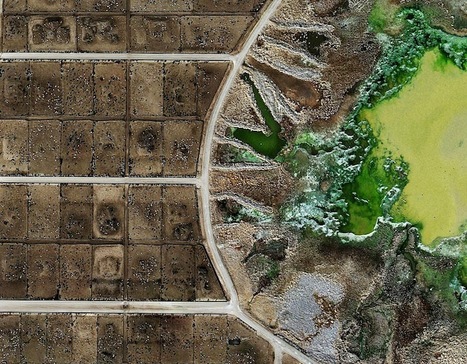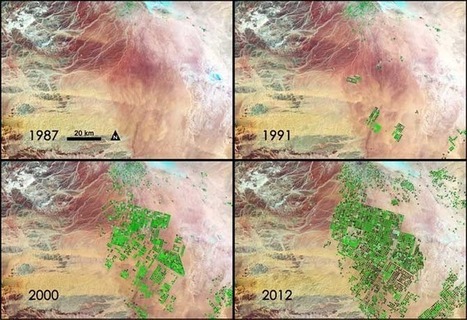Seen from a satellite, an industrial feedlot has a sort of abstract beauty. The washes of colors, the juxtaposition of organic and rigid geometries, initially obscure the subject. Then comes the realization: That’s where our food comes from.
Such is the power of “Feedlots,” a new series of images crafted by British artist Mishka Henner from publicly available satellite photographs. Henner does work with the photos, enhancing the colors — the waste lagoons above, for example, are flat green rather than bright — but the physical details are unaltered...



 Your new post is loading...
Your new post is loading...













British artist Mishka Henner took photographs and enhanced the colors of feedlots to reveal the agribusiness of meat production. Photographs of feedlots are considered illegal and the legal repercussions of Mishka Henner are not clear at the moment, but the photographs are shocking and reveal again how little Americans know about their food production.
Americans have changed the places and utilized them to build agribusiness empires and have introduced new problems to the landscape of feedlot and farming towns.
This article makes me sickened. With previous knowledge of factory farms I know of the horrors that go on but this takes the cake. These pictures shown in the article depict the chemical and waste spill off which I am absolutely sure this is NOT good for the environment.
Beautiful imagery at one scale tells an unsavory story at another.